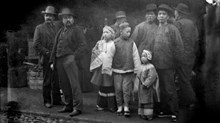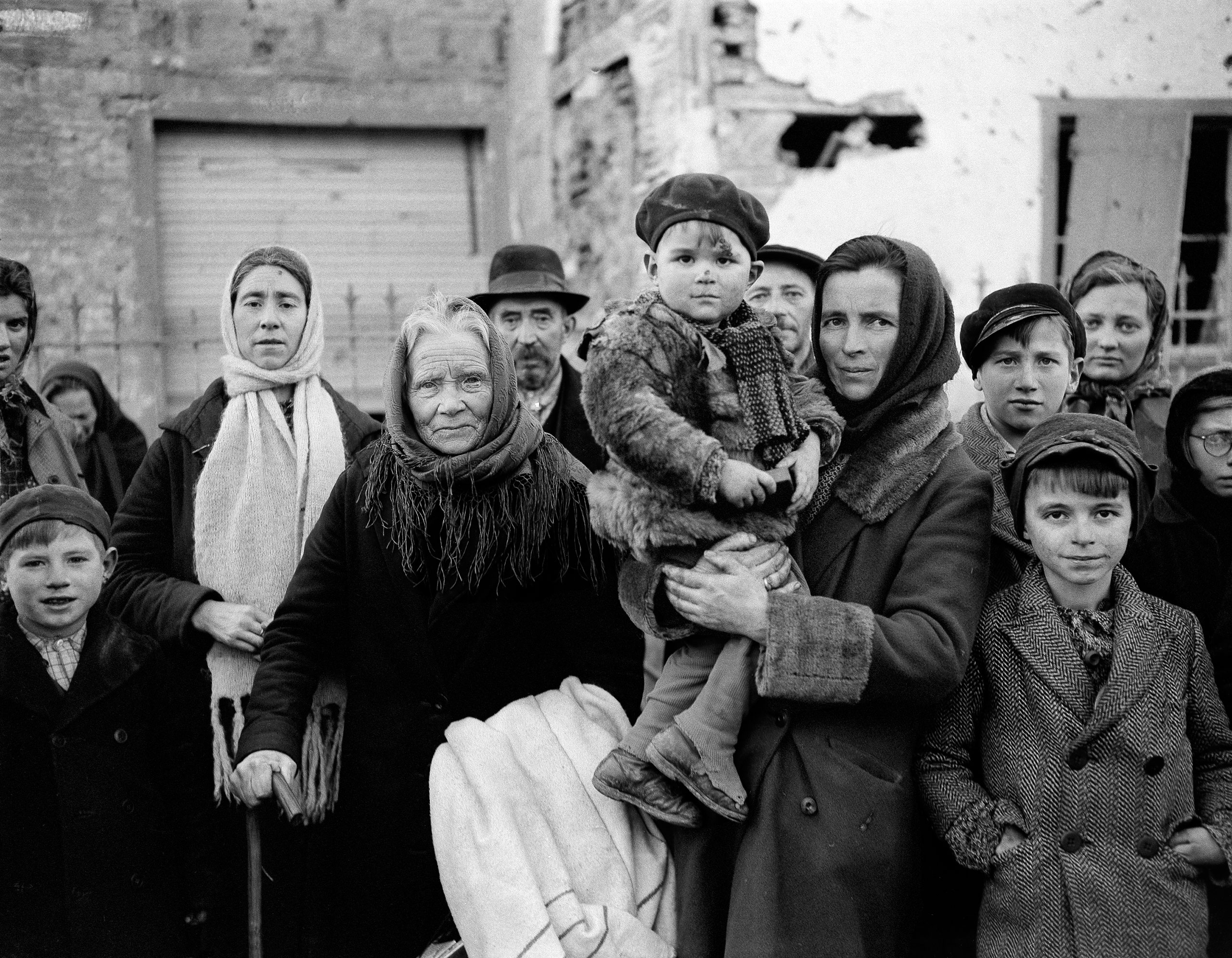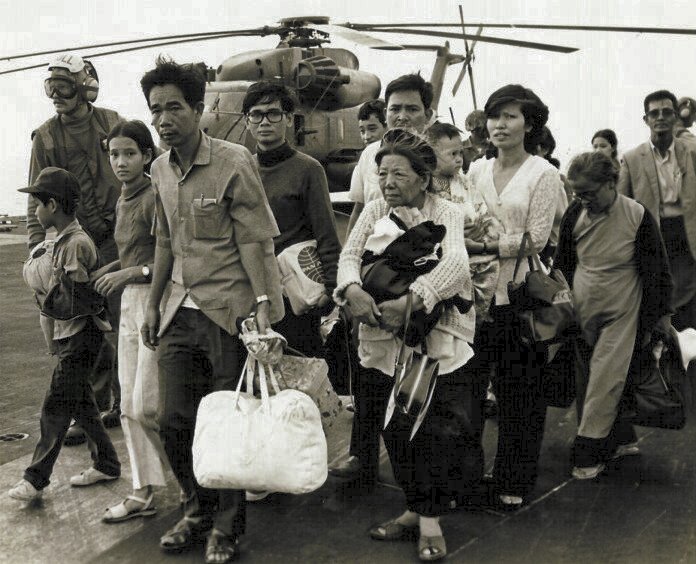This year, the number of displaced people reached 100 million. That includes refugees, asylum seekers, and 53.2 million people displaced within their home country by conflict. And it’s a higher number than ever recorded in history.
In light of this, World Relief and other organizations have called for action – by the U.S. Government, community members, and the Church. Christian leaders are at the forefront of this advocacy, motivated by verses like Matthew 25:31-40.
“I was hungry and you gave me food, I was thirsty and you gave me drink, I was a stranger and you welcomed me.”
Matthew 25:31-40, in which Jesus tells His followers that caring for others is a way to serve Him directly.
A History of Welcoming the Stranger
The crisis may be greater than ever before, but throughout history, Christians have spoken up about immigrant and refugee needs.
In recent U.S. history, Christians have referenced Deuteronomy 24:14 as a moral reason to look out for the good of immigrants: “Do not take advantage of a hired worker who is poor and needy, whether that worker is a fellow Israelite or a foreigner residing in one of your towns.”
This Scripture has inspired countless people of faith to seek justice and care for immigrants navigating a foreign culture in the United States.
At times of prevalent anti-immigrant narratives, Christians have returned to the Bible’s command to care for immigrants and refugees. At times when the Church forgot its mandate, bold leaders reminded the Church of this biblical calling.
Here are 5 Times in History When Christians Led in Advocating for Immigrants and Refugees.
Advocating for Chinese Immigrants
In the 1840s and ‘50s, work in the California gold mines and garment factories, agricultural fields, and railroads drew thousands of Chinese immigrants to the U.S. West Coast. Eventually, more than 25,000 Chinese immigrants became the state’s largest non-white minority group. They formed vibrant communities in California. But despite being only .0002% of workers in the U.S., anti-Chinese sentiment began to grow, as white workers blamed them for taking jobs and depressing wages. Chinese immigrants faced growing discrimination, exclusion from community, and new anti-Chinese legislation. Eventually, the Chinese Exclusion Act of 1882 restricted Chinese people from migrating to the United States.

During this time, a Presbyterian pastor and missionary named William Speer became a vocal advocate for the fair treatment of Chinese immigrants. He used his relationships, knowledge of their language, and workforce data to argue against anti-Chinese legislation and even planted a Chinese Christian church in San Francisco in 1853. During his lifetime, he was vocal in opposition to racial prejudice and left a legacy of successors who contributed to fighting the racist anti-Chinese sentiment and joined with Chinese Christians to lead and channel Presbyterian support for the community.
Supporting Immigrants in the Community
At the turn of the 20th century, immigration to the U.S. ballooned. While conflicts and poverty pushed some immigrants to leave their home countries, the promise of jobs and economic opportunity drew others to the United States. Between 1880 and 1920, more than 20 million immigrants arrived – the majority from Southern, Eastern and Central Europe, including 4 million Italians and 2 million Jews. Unfortunately, many Protestants responded by working to restrict immigration and limit who could come to the United States (excluding Asians and other racial or ethnic groups) and promoting anti-Catholic messages and discrimination.

However, other Christians formed organizations and associations that helped immigrants integrate into the community. The YMCA in Cincinnati hosted the first known English as a Second Language (ESL) class in 1856 to help German immigrants gain language skill. Additionally, the YMCA served Asian communities in San Francisco. Then, in 1903, the YMCA created a specific department to work with industrial workers and immigrants, a legacy continued through to the YMCA’s present day adult education classes, refugee services, and New American Welcome Centers.
Welcoming World War II Survivors
By the end of the catastrophic World War II, millions of people were displaced throughout Europe or within their home countries. Many returned to their countries of origin within a few months of the war’s end. But for others, their home countries were irrevocably changed or unwelcoming. Among these were Jewish Holocaust survivors, many of whom spent years living in displaced persons camps alongside imprisoned Nazi perpetrators.

During this displacement, Catholic and Protestant congregations organized to respond. Christians joined with U.S. policymakers to convince American citizens to sponsor refugees. And while the U.S. Government created new resettlement legislation, Christian agencies and churches planned and implemented resettlement efforts, while also advocating before the government. In 1948, the United States passed the country’s first refugee and resettlement law. As a result, the government and Christian agencies partnered to help displaced Europeans seeking permanent residence in the United States after World War II. And to welcome the newcomers into community life.
Responding to Vietnamese Refugees
In 1965, the Immigration and Nationality Act fundamentally changed the American immigration system. Specifically, it removed quotes from the 1920s that had favored racial and ethnic groups over others and limited immigration from specific countries. The Act replaced them with a preference system that emphasized family reunification and skilled immigrants. In the next five years, immigration from countries torn by conflict, such as Cambodia and Vietnam, quadrupled. During this time, particularly from the 1950s until 1980, the U.S. Government’s refugee resettlement program was inconsistent, and the U.S. did not invest in refugee assistance. However, churches and faith-based organizations stepped up to fill in the gaps and help refugees get their footing.
Sometimes, this was done reluctantly. After two decades of conflict in Vietnam ended in 1975, 2 million Vietnamese people had been killed, 3 million were wounded, and 12 million had become refugees. In response, a woman named Evelyn Mangham emerged to call the Church to welcome Vietnamese refugees. With 20 years of experience as a missionary, Evelyn Mangham cold-called churches. She quoted the Bible. And she told stories. Because of her commitment to the Church and Scripture, she worked tirelessly to convince churches to sponsor refugees from Vietnam.
In the span of a year, she had convinced churches to sponsor 10,000 refugees from Vietnam, Laos, and Cambodia.

Founding World Relief
Ultimately, Evelyn Mangham went on to found World Relief’s refugee resettlement program alongside her husband, Thomas Grady Mangham, Jr.
We can thank this woman’s tenacity and conviction for World Relief’s 40-year history of refugee resettlement. And the impact continues today! All because Evelyn Mangham read Scripture and responded, believing that the Church must welcome the stranger.
“Her impact on the lives of those who are vulnerable will be felt for generations to come… I know there was a huge celebration for her in heaven as so many people whose lives she touched welcomed her to her eternal home.”
Jenny Yang, World Relief’s VP of Advocacy
Providing Safe Haven for Asylum Seekers
In the 1980s, nearly a million people fled Central American countries, crossing the U.S. border to seek asylum. Civil war and violence pushed people to leave home in El Salvador and Guatemala to seek safety. Yet a tiny fraction of those who crossed Mexico to the southwestern United States were approved for asylum.
The change came when Christians, alongside Jewish and other faith leaders, advocated on behalf of these migrants. The Sanctuary Movement began in 1980 with a goal: to provide shelters to Central American refugees fleeing civil wars. For instance, churches provided English lessons, basic humanitarian help, and legal aid through immigration attorneys. Additionally, leaders preached sermons, organized protests, and advocated to the government on behalf of the asylum seekers. And hundreds of religious communities provided sanctuary, usually inside houses of worship.
At its height, the movement grew to include more than 500 congregations.

Consequently, the Sanctuary Movement was successfully pushing the Reagan administration to pass the Immigration Reform and Control Act of 1986. This landmark piece of legislation extended temporary worker visa programs and helped 3 million people gain legal status.
Recent History
Today, there are nine agencies that work with the U.S. Government to resettle refugees. World Relief is one of them, along with five other faith-based organizations. One is Jewish, one is Catholic, and three others are Protestant. World Relief invites churches and Christians as a whole to welcome refugees and serve immigrants in the community – regardless of the religion, ethnicity, or country of origin of the newcomers.
As these five examples show, Christians have often been on the front lines of serving immigrants and refugees. Together, they have shaped history and the future of the country. Through action in faith, the Church has moved.
Today, Christians have another opportunity to act. And it’s at a pivotal time. Just like Christians throughout U.S. history, those who join World Relief are motivated by faith. And like Christians in the past, we have a calling. In response to a crisis, we can move together. Because of our faith and in light of the need, we can love our neighbors as Christ loves us.
And we can welcome the stranger.

